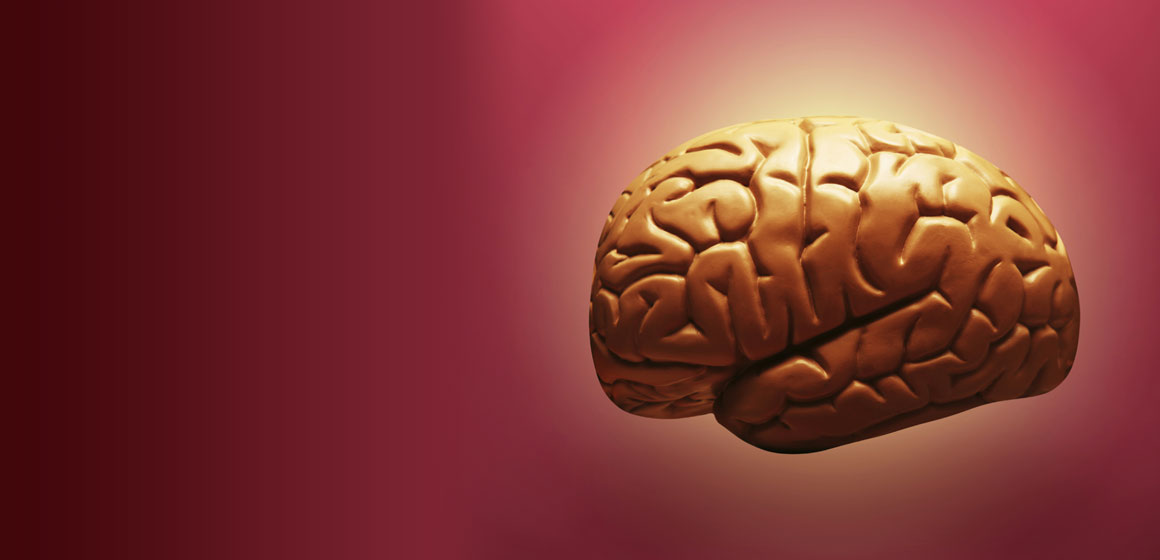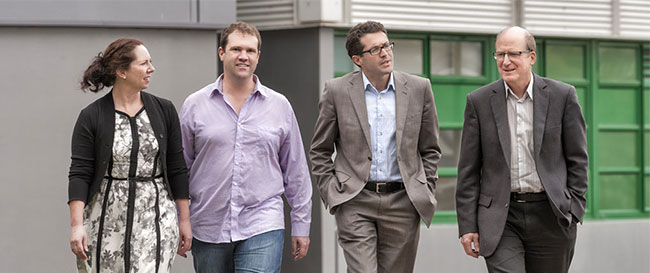 Monday 23 February 2015 2:53pm
Monday 23 February 2015 2:53pmBrain Research New Zealand – Rangahau Roro Aotearoa is bringing together expertise to gain a better understanding of the ageing brain and to develop new therapies to enhance lifelong brain health.
Enabling people to age well with a healthy brain is the central vision for Brain Research New Zealand – Rangahau Roro Aotearoa, a new CoRE being co-hosted by the University of Otago and the University of Auckland, under the leadership of co-directors Professor Cliff Abraham (Otago) and Professor Richard Faull (Auckland).
Abraham says they decided that a jointly-hosted CoRE (Centre of Research Excellence) would be the most effective arrangement and a clear signal that it is a national effort to tackle ageing-related neurological disorders, which are a major problem for most western societies.
“By 2036 one in three of the 1.2 million New Zealanders aged over 65 will be disabled by an ageing-related brain disorder.
“These disorders are accompanied by immense personal, social, economic and health-care costs that will increase quite dramatically with time. Direct health-care costs associated with these disorders are already estimated to be over $1 billion per year, not to mention the huge physical and emotional strains placed on individuals, family and whanau.”
“Our aim is to understand the biological ageing of the brain, and develop new therapies and better clinical and community care to enhance lifelong brain health for all New Zealanders.”
Brain Research New Zealand will draw the country's world-class brain research capability into a cohesive national team involving the Centre for Brain Research at the University of Auckland, the Brain Health Research Centre at the University of Otago, the National Institute for Stroke and Applied Neuroscience at AUT and the New Zealand Brain Research Institute in Christchurch. The latter involves both the University of Canterbury and the University of Otago.
This will bring together a group of about 70 leading researchers and clinicians in ageing-related disorders such as Alzheimer's, Huntington's and Parkinson's diseases and stroke, covering disciplines ranging from neurosurgery to epidemiology and public health.
The CoRE will focus on four main themes: ageing and disease mechanisms, disease biomarkers, harnessing brain plasticity, and testing new therapies and lifestyle interventions, all feeding into the public dissemination of new information relating to brain health during ageing.
Abraham says the research will, thus, cover a whole range of analyses from cells and disease mechanisms, right through to human interventions and clinical trials.
“It's not just more of the same research. By bringing together the technologies and expertise from around the country, we will produce new streams of sophisticated and advanced research with a long-term translational focus to address this key health issue for New Zealand.”

Brain Research New Zealand - Rangahau Roro Aotearoa members (from left): Dr Louise Parr-Brownlie, Dr Andrew Clarkson, Dr Nick Cutfield and Professor Cliff Abraham.
Dr Louise Parr-Brownlie:Parkinson's disease
“We examine some basic variables such as firing rates and patterns. For example, do these cells just tick along like a clock or do they actually produce bursts of activity after a relative period of silence? Those changes could be key in understanding how the brain activates muscles to create movement.”
It allows them to compare activity in healthy cells with those affected by Parkinson's disease when they make a movement. They can then see how brain signalling differs between the two and how that underlies movement deficits.
“We need to better understand that information and look for better ways of stimulating the brain as a potential treatment.”
Patients are already treated using deep brain stimulation where electrodes are put deep in their brain and connected up to something similar to a pacemaker for the brain, Parr-Brownlie explains.
“It is beneficial but does have side effects, so we are exploring different ways of stimulating the brain and different sites of stimulation so we can get better outcomes with fewer side effects.”
Dr Andrew Clarkson:Stroke recovery
The types of drugs given to stroke patients transition over time, from those given to minimise damage in the hours post-stroke, to those given in the following weeks and then in the months afterwards to promote recovery.
“Mechanistically there are very distinct windows where we are targeting drug treatments, but these windows change constantly as the brain adapts or alters its state of plasticity. We're trying to understand how that occurs and how we can change the brain's activity.”
Clarkson and his colleagues first identify a brain-signalling pathway involved in recovery, then create a drug that will specifically target that pathway and either increase or decrease the activity, depending on what is needed.
They then work with pharmaceutical companies such as Roche, which Clarkson already partners with, to develop a clinical drug that can cross the blood-brain barrier. They are already in discussions around establishing the first of these clinical trials.
Another option being examined is a gel which can be put into the stroke-affected area of the brain so it slowly releases the drugs into surrounding tissue.
Clarkson will also be researching epilepsy and its links to brain damage around the time of birth.
Dr Nick Cutfield:Clinical research
“We hope to establish a national network of clinics looking at cognitive function. One of the challenges in treating neurodegenerative disorders like Alzheimer's and Parkinson's is that current treatments control symptoms to a degree, but they don't reverse the underlying changes in the brain cells.
“One of the reasons why it is difficult to slow or reverse changes in the brain is that by the time someone presents with symptoms there has already been a lot of change in the brain, occurring over many years.”
Early diagnosis using new biomarkers, perhaps even before symptoms appear, could give treatments that have been showing promise in the laboratory a better chance of working.
Cutfield says potential new treatments to be tested include new drugs, neuromodulation and other interventions.
“We would like to be able to maximise the quality of this research by co-ordinating it at a national level, which can mean a larger number of people participating in some of these studies than we otherwise might get in a single centre.”
Funding
- Tertiary Education Commission (CoRE funding)
- Marsden Fund
- Health Research Council
- Neurological Foundation
- Lottery Health Research
- Roche Pharmaceuticals
- Lundbeck Foundation
- Danish Research Council
- National Health and Medical Research Council, Australia
- Maurice and Phyllis Paykel Trust
- Otago Medical Research Foundation